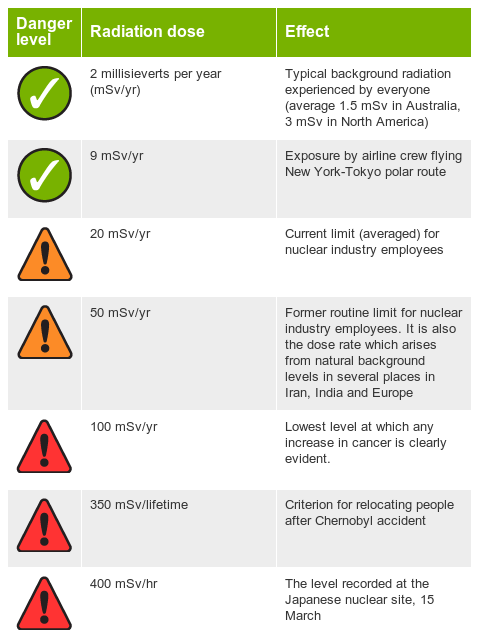It was supposed to be an internationally sanctioned operation to achieve a UN Resolution and protect civilians. Instead several states are openly criticizing the NATO forces for putting Libyan civilians at greater risk or even killing them.
The President of Uganda has published his opinion in the paper and points out many interesting facts about Libya as well as inconsistencies in American foreign policy.
In the nine-page statement, the President accused the West of hastily imposing a ‘no-fly zone’ on Libya yet it has dragged its feet on the Africa Union request for the same over Somalia.
“We have been appealing to the UN to impose a no-fly zone over Somalia so as to impede the free movement of terrorists, linked to Al-Qaeda that killed Americans on September 11, killed Ugandans last July and have caused so much damage to the Somalis, without success. Why?†the President asked.
The UN imposed a ‘no-fly zone’ on Libya last Thursday.
Museveni also accused the West of looking on as a Libya-like crisis evolves in the Great state of Bahrain.
The same could perhaps be asked of the Ivory Coast. Why has the UN not imposed the same conditions as in Libya?
A few things that stand out to me, which President Museveni does not mention.
One, Libya is nestled between the revolutions of Egypt and Tunisia. I can’t say exactly how that factors into American logic for intervention but it should not be underestimated. It’s easy for Museveni to say one state has peaceful demonstrations while another has violent insurrectionists because he is ignoring the flow of arms and support going across state borders from demonstrators to insurrectionists. The true difference may be best judged in the dictatorship’s response relative to a whole region of revolution.
Two, enforcement of a no-fly zone (with minimum air casualties) means anti-aircraft defenses have to be neutralized. That is why so many missiles were fired in the initial phase. There is no surprise to this tactic. The civilian casualties are tragic but Museveni does not propose in his statement an alternative method to disabling the threats to civilians and the aircraft sent to impose a no-fly zone.
Three, while I can understand why China, Russia, India, Arab nations, African nations…all believe that America aims to remove Gaddafi from power, this is their moment to step up. They could now find a way to take the reigns of the operation to ensure it remains focused on minimizing civilian casualties. Their decision to pull back and criticize leaves the US in a position of greater authority. Has the US made it impossible for the other countries to work with the NATO forces? It seems that leaders of the other nations are unwilling to take responsibility for the consequences of a tough situation with few easy answers.
Museveni urged Gadaffi to sit at a round table with the opposition, adding that since there have never been elections in Libya, “dialogue is the correct way forward.â€
That is not a bad suggestion. It could be that Museveni is using a public critique of the US as a “good cop” routine; perhaps he knows that the UN resolution and NATO attacks could inspire Gadaffi to sit at the table, but the Libyan dictator will not appear without a sense of balance (less overt support for America) in the AU.
I highly recommend reading the full statement. It has some parts that are just ridiculous:
Black people are always polite.
They, normally, do not want to offend other people. This is called obufura in Runyankore, mwolo in Luo – handling, especially strangers, with care and respect. It seems some of the non-African cultures do not have obufura. You can witness a person talking to a mature person as if he/she is talking to a kindergarten child. “You should do this; you should do that; etc.†We tried to politely point out to Col. Gaddafi that this was difficult in the short and medium term.
I almost quit after reading that nonsense, but it also has some interesting insights into the Ugandan perspective on international relations, such as this:
Idi Amin came to power with the support of Britain and Israel because they thought he was uneducated enough to be used by them.
Amin, however, turned against his sponsors when they refused to sell him guns to fight Tanzania. Unfortunately, Col. Muammar Gaddafi, without getting enough information about Uganda, jumped in to support Idi Amin. This was because Amin was a ‘Moslem’ and Uganda was a ‘Moslem country’ where Moslems were being ‘oppressed’ by Christians.
Amin killed a lot of people extra-judiciary and Gaddafi was identified with these mistakes. In 1972 and 1979, Gaddafi sent Libyan troops to defend Idi Amin when we attacked him. I remember a Libyan Tupolev 22 bomber trying to bomb us in Mbarara in 1979.
And this:
Before Gaddafi came to power in 1969, a barrel of oil was 40 American cents. He launched a campaign to withhold Arab oil unless the West paid more for it. I think the price went up to US$ 20 per barrel. When the Arab-Israel war of 1973 broke out, the barrel of oil went to US$ 40.
And last, but not least, this:
The AU mission could not get to Libya because the Western countries started bombing Libya the day before they were supposed to arrive. However, the mission will continue. My opinion is that, in addition, to what the AU mission is doing, it may be important to call an extra-ordinary Summit of the AU in Addis Ababa to discuss this grave situation.
I would blame that on the French, not the US, but that could just be me. I suspect France was one of the most eager to intervene and are likely to have had special forces there from Djibouti long before the bombs started to drop.



